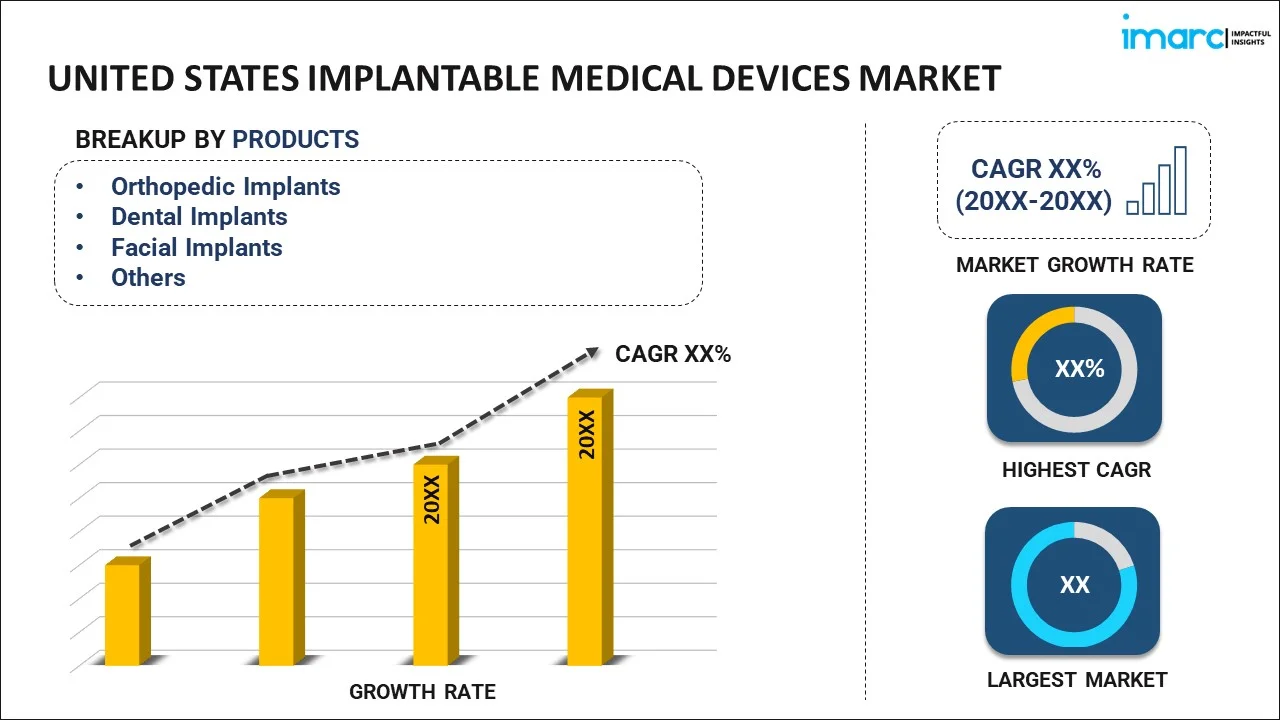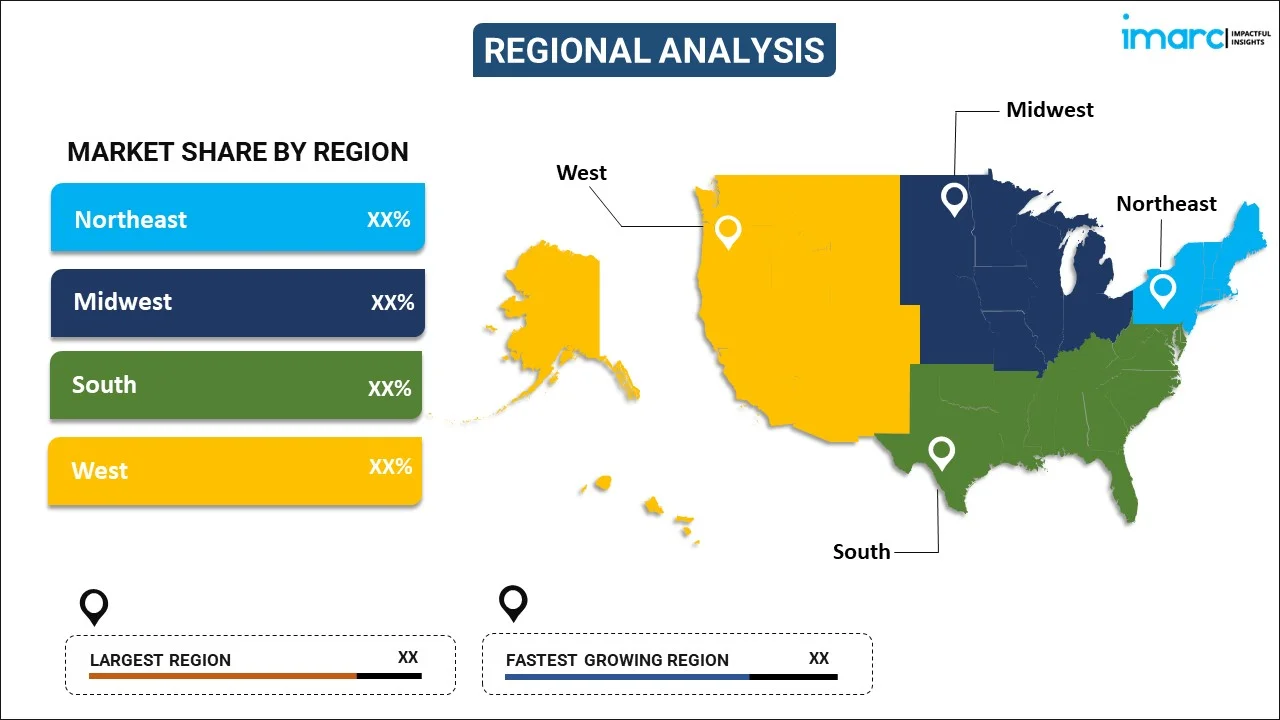
United States Implantable Medical Devices Market Report by Product (Orthopedic Implants, Dental Implants, Facial Implants, Breast Implants, Cardiovascular Implants, and Others), Material (Polymers, Metals, Ceramics, Biologics), End User (Hospitals, Ambulatory Surgery Centers (ASCs), Clinics), and Region 2025-2033
Market Overview:
The United States implantable medical devices market size reached USD 57.9 Billion in 2024. Looking forward, IMARC Group expects the market to reach USD 81.9 Billion by 2033, exhibiting a growth rate (CAGR) of 3.73% during 2025-2033.
|
Report Attribute
|
Key Statistics
|
|---|---|
|
Base Year
|
2024
|
|
Forecast Years
|
2025-2033
|
|
Historical Years
|
2019-2024
|
|
Market Size in 2024
|
USD 57.9 Billion |
|
Market Forecast in 2033
|
USD 81.9 Billion |
| Market Growth Rate (2025-2033) | 3.73% |
Medical implants are introduced inside the body during surgical procedures to support a damaged part, replace a missing biological structure or enhance the functioning of an existing organ. These implants are used in different body parts for numerous applications, such as orthopedics implants, pacemakers, cardiovascular stents, defibrillators, neural prosthetics or drug delivery systems. Some of the widely used implantable medical devices in the United States (US) include cardiac defibrillators, coronary stents, hip implants, interocular lenses and insulin pumps.
The increasing prevalence of cardiovascular and neurological disorders, in confluence with the rising number of road accidents and sports injuries, represents one of the key factors bolstering the implantable medical devices market growth in the US. Apart from this, the availability of favorable reimbursement policies is acting as another significant factor contributing to the market growth. Furthermore, due to the growing consciousness towards physical appearances among individuals, cosmetic surgeries are gaining traction. This, in turn, is driving the demand for implantable medical devices in the country.
Key Market Segmentation:
IMARC Group provides an analysis of the key trends in each segment of the United States implantable medical devices market report, along with forecasts at the country and regional levels from 2025-2033. Our report has categorized the market based on product, material and end user.
Breakup by Product:

- Orthopedic Implants
- Dental Implants
- Facial Implants
- Breast Implants
- Cardiovascular Implants
- Others
Breakup by Material:
- Polymers
- Metals
- Ceramics
- Biologics
Breakup by End User:
- Hospitals
- Ambulatory Surgery Centers (ASCs)
- Clinics
Breakup by Region:

- Northeast
- Midwest
- South
- West
Competitive Landscape:
The competitive landscape of the industry has also been examined along with the profiles of the key players.
Report Coverage:
| Report Features | Details |
|---|---|
| Base Year of the Analysis | 2024 |
| Historical Period | 2019-2024 |
| Forecast Period | 2025-2033 |
| Units | Billion USD |
| Segment Coverage | Product, Material, End User, Region |
| Region Covered | Northeast, Midwest, South, West |
| Customization Scope | 10% Free Customization |
| Post-Sale Analyst Support | 10-12 Weeks |
| Delivery Format | PDF and Excel through Email (We can also provide the editable version of the report in PPT/Word format on special request) |
Key Questions Answered in This Report:
- How has the United States implantable medical devices market performed so far and how will it perform in the coming years?
- What has been the impact of COVID-19 on the United States implantable medical devices market?
- What are the key regional markets?
- What is the breakup of the market based on the product?
- What is the breakup of the market based on the material?
- What is the breakup of the market based on the end user?
- What are the various stages in the value chain of the industry?
- What are the key driving factors and challenges in the industry?
- What is the structure of the United States implantable medical devices market and who are the key players?
- What is the degree of competition in the industry?
Need more help?
- Speak to our experienced analysts for insights on the current market scenarios.
- Include additional segments and countries to customize the report as per your requirement.
- Gain an unparalleled competitive advantage in your domain by understanding how to utilize the report and positively impacting your operations and revenue.
- For further assistance, please connect with our analysts.
 Inquire Before Buying
Inquire Before Buying
 Speak to an Analyst
Speak to an Analyst
 Request Brochure
Request Brochure
 Request Customization
Request Customization




.webp)




.webp)












